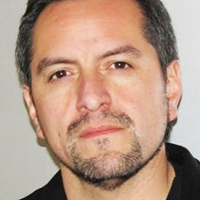Some aspects of quality of ambulance care and completeness of information in the transfer forms of emergency patients who arrived in ambulances at the National Hospital of Sri Lanka
Published on: 20th November, 2018
OCLC Number/Unique Identifier: 7929299257
Objective: To describe some aspects of the quality of ambulance care and completeness of information in the transfer forms of emergency patients who arrived in ambulances to the National Hospital of Sri Lanka (NHSL).
Methods:This was a descriptive study. All ambulances arrived at the NHSL during the study period with an emergency patient were selected (n=409) and from those 250 transfer forms, which could be traced were taken. An interviewer-administered questionnaire was used for ambulance staff. A Checklist, which has been derived from the standard patent chart, was used to determine the availability of information on transfer forms.
Results: Of the 409 ambulances, the patient was accompanied by a doctor in 4% (n=16), a nurse in 4% (n=15) and Emergency Medical Technicians (EMTs) in 1% (n= 4), and there were 675 miner employees and 409 drivers. Twenty six percent (n= 4) of doctors, 12.5% (n= 2) of nurses, 100% (n=4) of EMTs, 56.9% (n=189) of drivers and 24.3% (n=164) of minor employees had received training in emergency medicine/pre-hospital care.
The time interval between receipt of the message and loading the patient to the ambulance was >15 minutes on 19% (n= 75) of the occasions and from the latter time to commencement of the journey was >15 minutes on 7% (n=27) of the occasions.
The call number of sending facility 0.4% (n=1) and sending time 33.2% (n=83) were poorly documented. The past surgical histories 20.8% (n=52), chronic diseases 48% (n=120), psychological problems 13.2% (n=33) and allergies 9.2% (n=23) were poorly documented. Details of physical examination findings except cardio-vascular system were not documented in >50% of transfer forms. Medications had been documented fairly (>60%) in most of the transfer forms and however, the procedures (IV fluids, ECG) were poorly documented (<30%).
Conclusion: The completeness of information in the transfer form was not up to standards. This emphasizes for need of well-structured standard transfer form in the country.
Knowledge, attitudes and skills of doctors, nurses and emergency medical technicians in pre-hospital care and emergency medicine who accompany patients in ambulances which arrive at the National Hospital of Sri Lanka
Published on: 19th December, 2018
OCLC Number/Unique Identifier: 8195585223
Objective: To assess the knowledge, attitudes, and skills in pre-hospital care and emergency medicine of doctors, nurses and Emergency Medical Technicians (EMT), who accompanied emergency patients in ambulances?
Methods: A descriptive cross-sectional study was conducted among the doctors, nurses, and EMT who accompanied emergency patients in ambulances to the National Hospital. All ambulances arriving from August to October 2008 (n=409) were screened. A self-administered questionnaire with 30 items was used to assess knowledge, attitudes, and skills. The knowledge was categorized into three levels, EMT-basic level, EMT-intermediate level, and EMT-paramedic level and the scores were converted into the percentages.
Results: The overall knowledge score on basic, intermediate and paramedic level were 57.5%, 42.9%, and 33.9% respectively. The knowledge on airway management (84.3%), bleeding control (82.9%), patient transport (71%) and first aids (61%) at the EMT-basic level were higher, however oxygen administration (37.1%) and basic life support (38.6%), spinal immobilization (45.7%), traction splinting (47%) and triage (48.6%) were lower. For the EMT-intermediate level, knowledge on endotracheal intubation (41.4%) and initial cardiac drug therapy (44.3%) were low. For the EMT-paramedic level, the knowledge on the advanced respiratory support (53%), ECG interpretation (37%), pharmacology (13%) and paediatric life support (20%) were lower.
Most staff showed positive attitudes towards the need of basic knowledge in pre-hospital care (97.1%, n=34), need for proper training (97.1%, n=34) and cost for pre-hospital care (77.1%, n=27), while they showed relatively negative attitudes towards the outcome of pre-hospital care (74.3%, n=26).
For the required skills for advanced life support, most of the staff showed skills in IV cannulation (71.4%, n=25) and IV drug administration (71.4%, n=25) however less skills were shown cricothyroidotomy (22.9%, n=8), pleural drainage (25.7%, n=9) and laryngoscopy and intubation (31.4%, n=11).
Conclusion: The knowledge at the EMT-basic level was average and intermediate and paramedic levels were lower than average. The attitudes were generally positive. However they lacked some specific skills.
Case reports of observed significant improvement in patients with ARDS due to COVID-19 and maximum ventilatory support after inhalation of sodium bicarbonate
Published on: 19th May, 2020
OCLC Number/Unique Identifier: 8599065026
The emergence of COVID-19 worldwide in an unprecedented pandemic. COVID-19 has a significant mortality, mostly from acute lung injury. We reviewed the available literature from China and Europe in regard to the behavior of SARS-Cov2 and ability to adhere to the cell wall [1,2]. The evidence based literature describes three component for the virus to grant entry to the target cells including Cathepsin B/L (the viral cap protein needed for initial connectivity to the cell wall), the angiotensin converting enzyme 2 and a low PH environment to allow the first connectivity of the virus to the cell wall [3]. The goal of our Case study was to prevent SARS- SARS-Cov2 from entering target cells by raising the airways PH using sodium bicarbonate inhalation. The sodium Bicarbonate inhalation (4.2% concentration) has been used safely in Cystic fibrosis (CF) patients with inspissated mucoid impaction [3,4] and in chloride inhalation toxicity by opposing the effect of the low PH induced by the insulting agent [4,5]. It has not been administered for COVID -19 patients particularly prior to this study.




